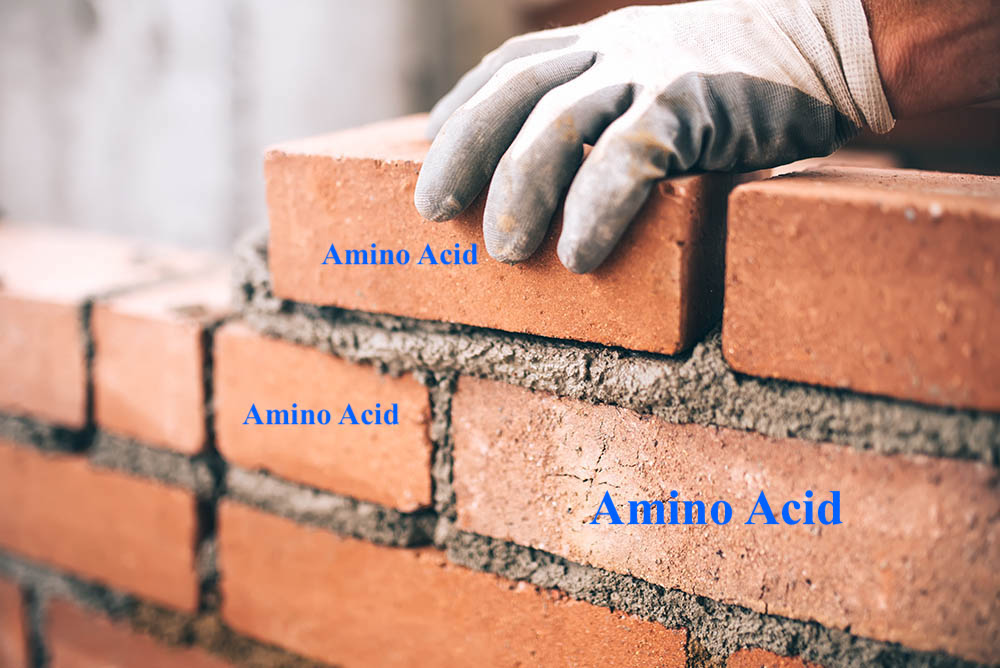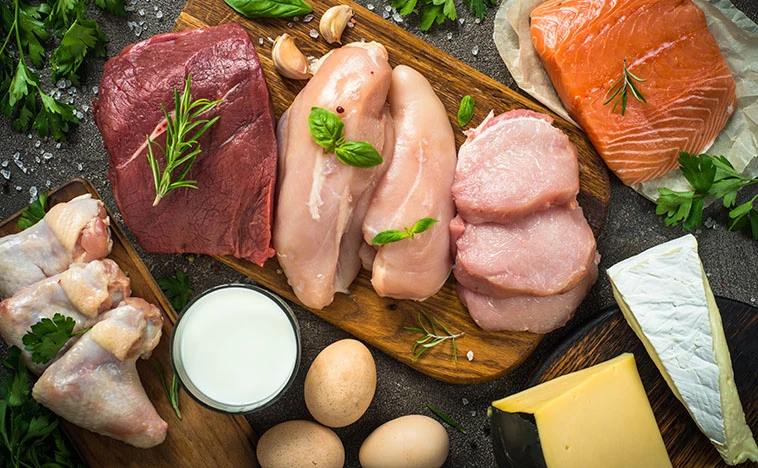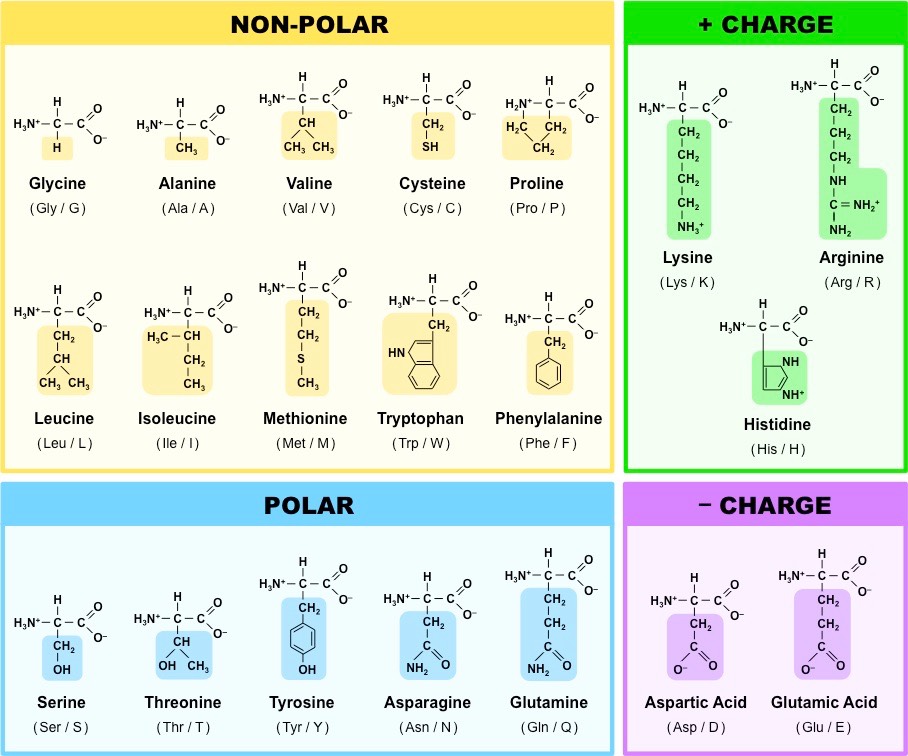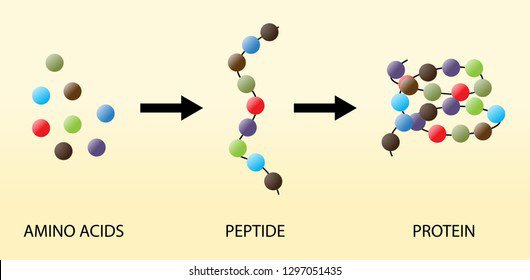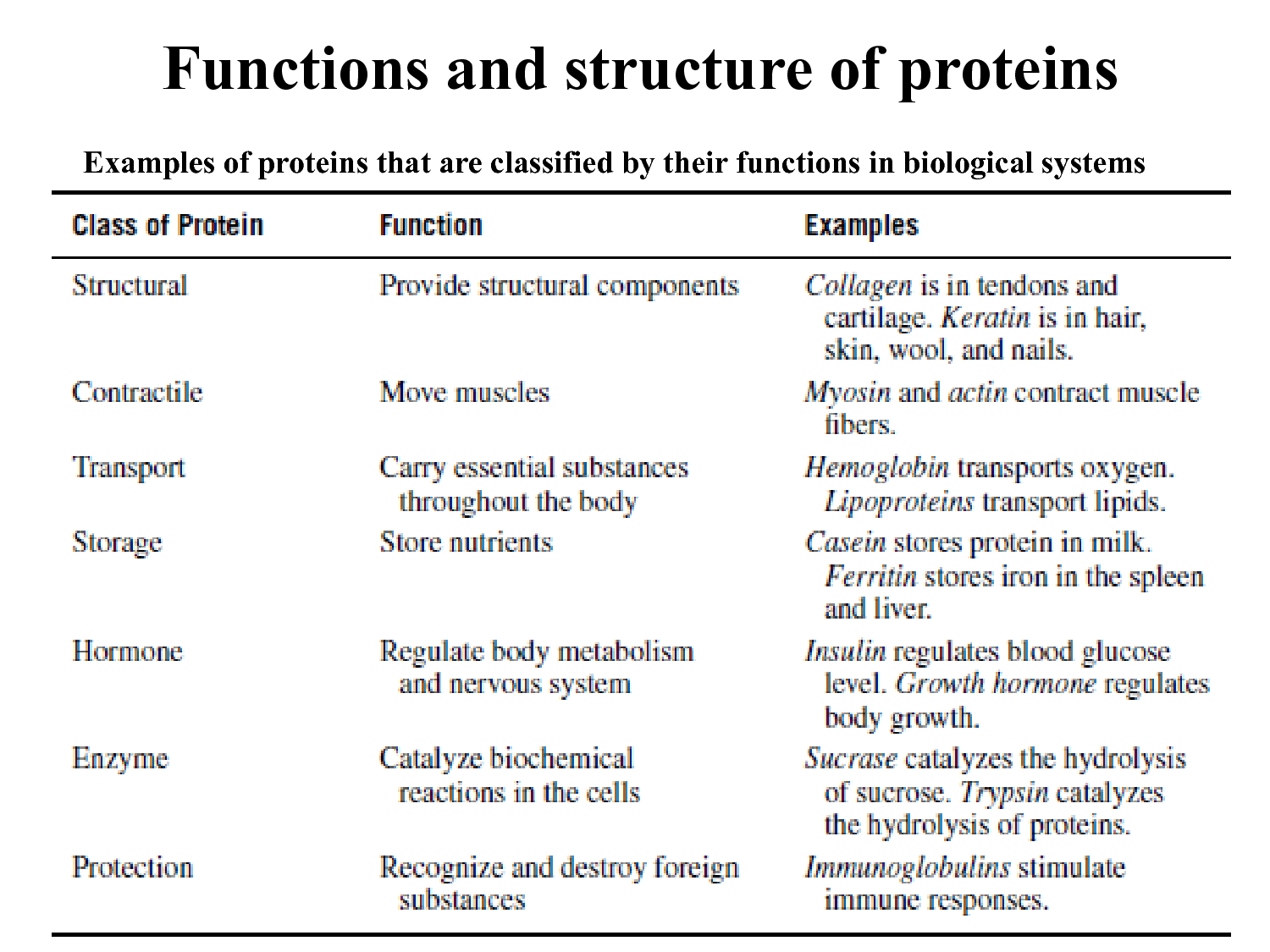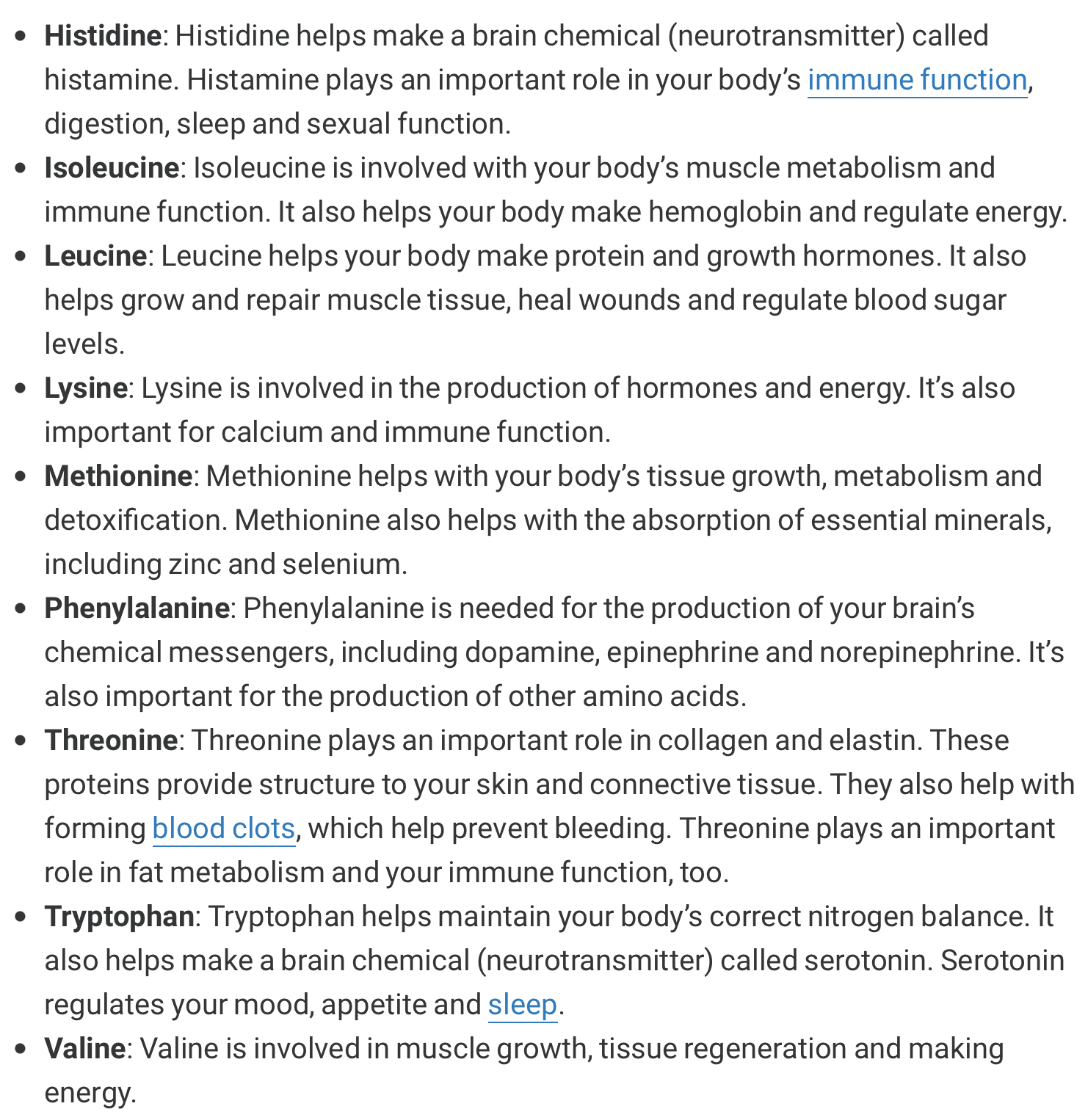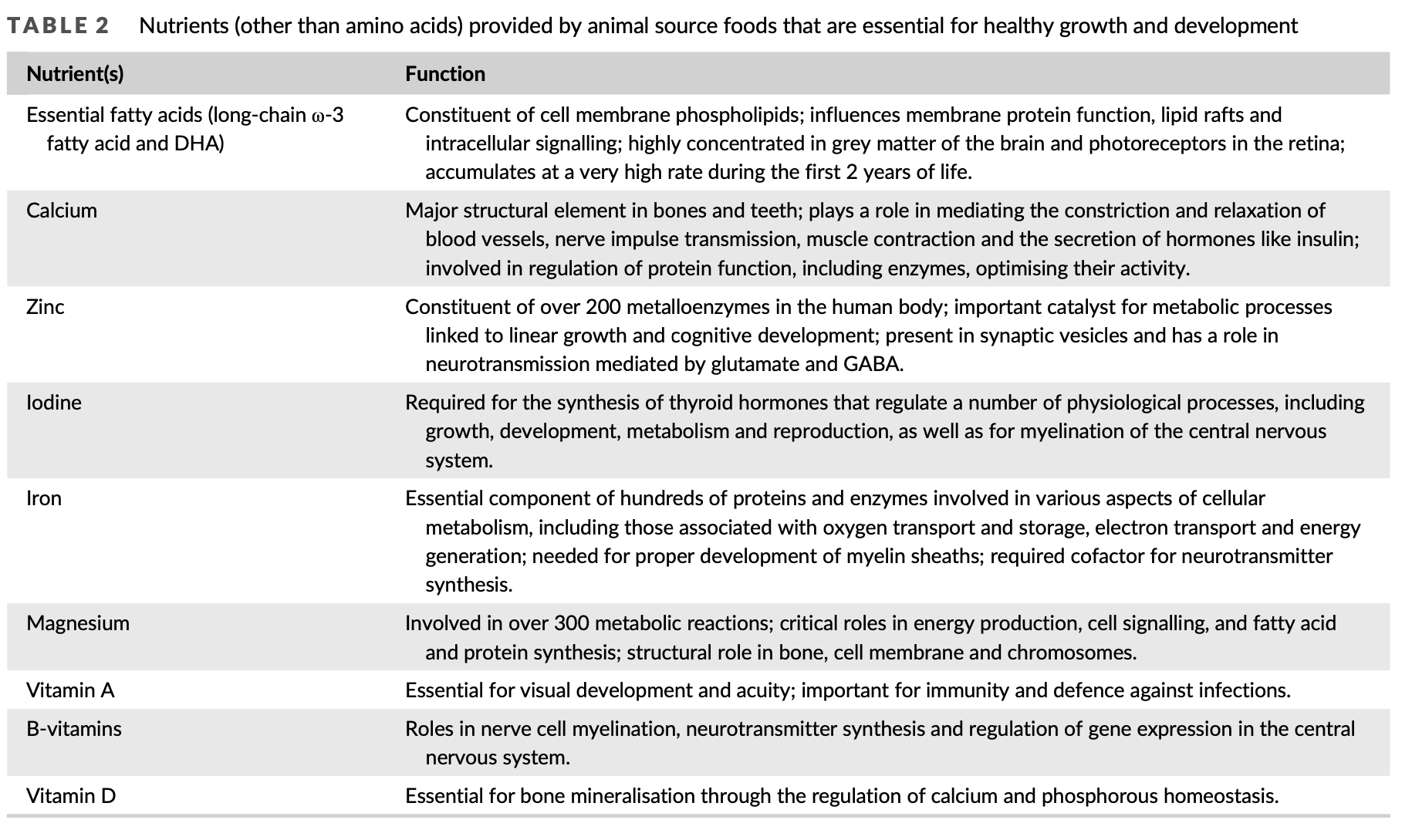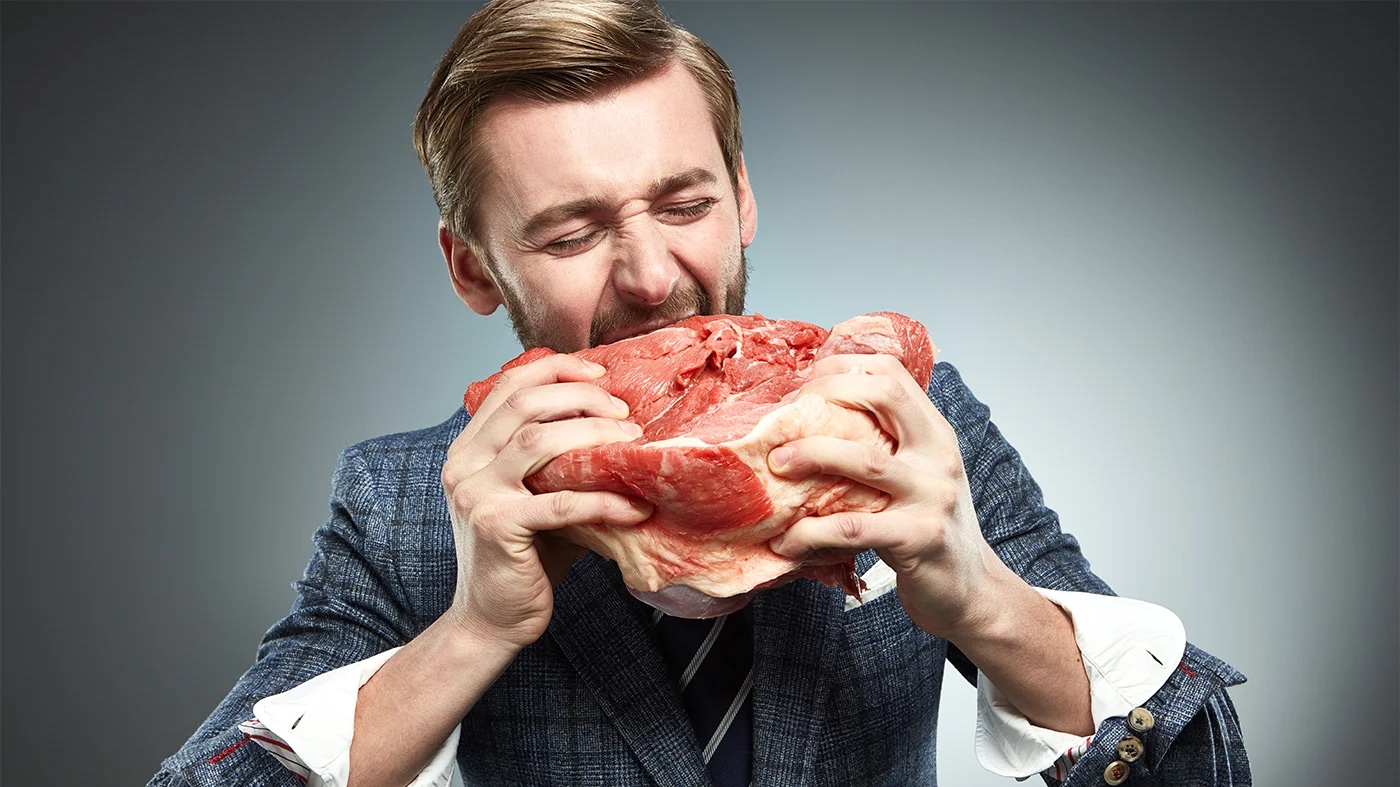Many of my clients have sustained injuries, especially from car accidents. Regretfully, pain and stiffness limit their movement, which can cause muscle loss, weakness, and deeper dysfunction. Increasing client strength, and overall health, through a well-developed strengthening program is a key component in rehabilitation. However, many forget that resistance training is only one step, of many, in helping reclaim one’s strength and independence. Optimal protein consumption is another key ingredient in a successful recovery. Because of this, a successful post-rehabilitation program should include evaluation and optimization of protein consumption. To help appreciate the role of protein in recovery and wellness, the following will explore the very building blocks of protein; amino acids.
WHAT IS PROTEIN EXACTLY?
Protein is an essential biomolecule, made of amino acids, permeating throughout the body, with over 40% found in skeletal muscle, 25% residing in organs, with the remainder residing in blood and skin.1 Such abundance should hint to us, its vital role in health and wellness. In fact, the very name of protein derives from the Greek work proteos meaning “taking first place” or “primary”, according to Gropper and Smith.1(175)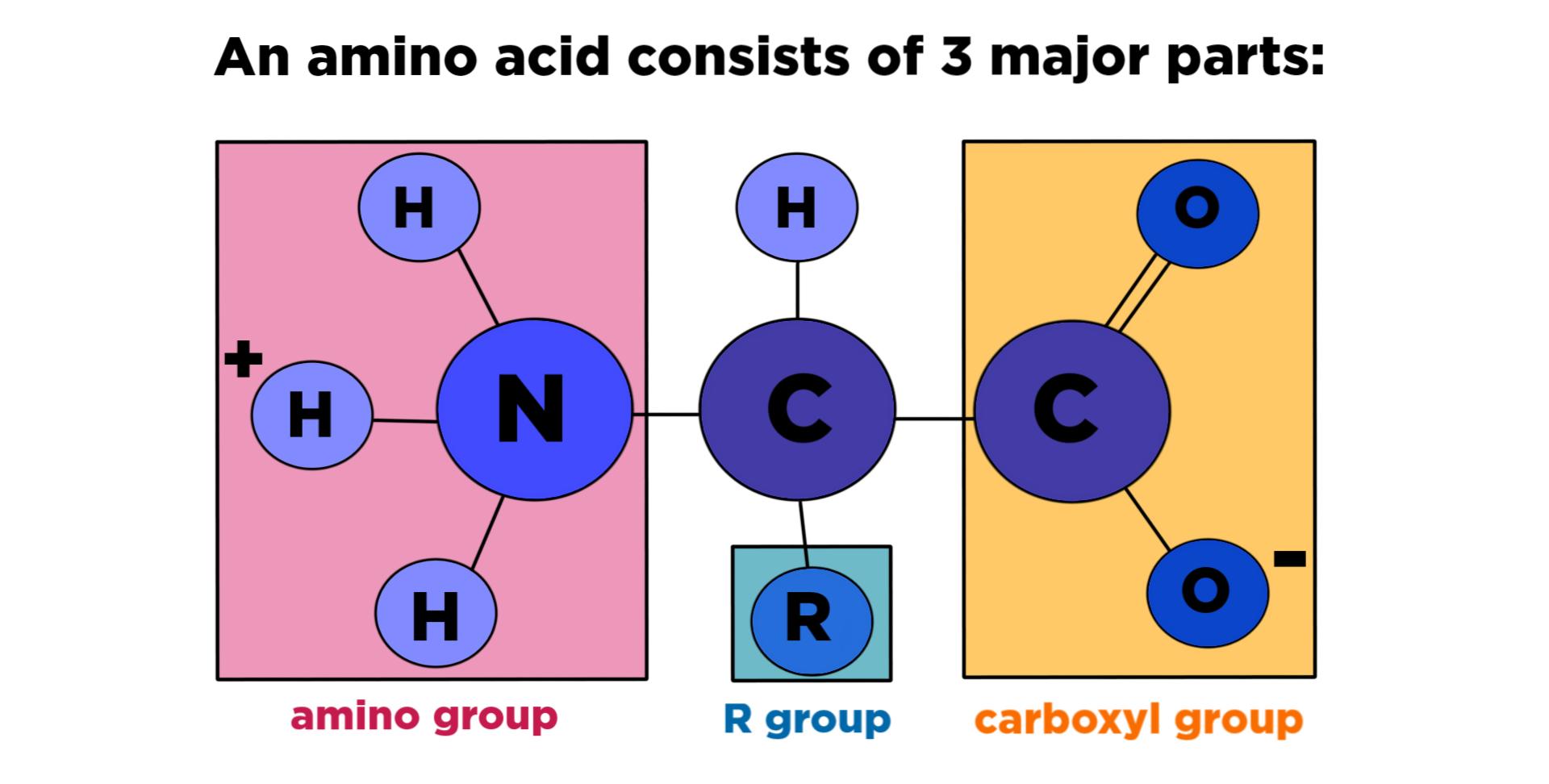
A SPRINKLE OF BIOCHEMISTRY (don’t let it scare you!)
Amino acids are small molecules, which are made of three different components bonded together; a central carbon (C), at least one carboxyl group (-COOH), and at least one amino group (-NH2).1(175) These qualities, along with the pH (the degree of acidity) of the environment that amino acids are in, their polarity (how they interact with water), charge (positive, negative, or neutral charge), and essentiality, define and characterize amino acids.1(175)
HOW MANY AMINO ACIDS DO WE USE?
The human body contains 20 amino acids (see above), and different amino acids combine with each other for specific purposes.2,3 If 2-10 amino acids are strung together, they are called oligopeptides, while 10-100 amino acids that bond are termed polypeptides.3(1) Finally, 100+ bonded amino acids are called proteins.3(1)
WHY ARE AMINO ACIDS AND PROTEINS IMPORTANT?
Amino acids in the form of peptides (2-100 bonded amino acids), for example, support many important processes in the body such as managing the immune system, communication, gene expression, detoxification, controlling tumor growth, controlling cancer proliferation, reducing inflammation, promoting antibacterial actions, as well as antioxidant functions.2(178),3(1) Furthermore, proteins (100+ amino acids) have structural roles that help form skeletal muscle, heart muscle, bone, teeth, hair, tendons, ligaments, and nails (see chart below).1(206) In short, amino acids and the peptides/proteins they produce are critical for health, and life.
WHAT ARE ESSENTIAL AMINO ACIDS?
Of the 20 amino acids needed in the body, 9 of these are considered essential amino acids that cannot be produced by the body and are critical for protein synthesis.5 Therefore, they must be consumed from the diet.1(178) Essential amino acids and their functions, according to Cleveland Clinic,7 include:
WHERE SHOULD I GET THESE ESSENTIAL AMINO ACIDS FROM?
The most complete, digestible, and absorbable forms of essential amino acids can be found within meat, poultry, fish, eggs, and dairy.1(178),4 Furthermore, animal protein sources also have additional micronutrients that are required for growth and development (see below).6
WHAT HAPPENS IF YOU DONT EAT ENOUGH ESSENTIAL AMINO ACIDS?
If an individual consistently under-consumes (or does not digest and absorb due to a digestive issue) essential amino acids, syndromes begin to present in the form of fatigue (from low transport of oxygen), anemia, insomnia, irritability, emotional disorders (anxiety, depression, moodiness), reduced levels of neurotransmitters, vomiting, and low appetite.8(849)
HOW MUCH SHOULD AN ADULT CONSUME PER DAY?
According to Hou and Wu,8 adults should consume (mg of amino acids per kilogram of bodyweight):
Histidine 14 mg
Isoleucine 19 mg
Leucine 42 mg
Lysine 38 mg
Methionine (+ Cysteine) 19 mg
Phenylalanine (+ Tyrosine) 33 mg
Threonine 20 mg
Tryptophan 5 mg
Valine 24 mg
In simpler terms, adults interested in increasing strength (especially individuals recovering from injury) could consume 1.2-1.6 g/kg bodyweight of protein per day from animal proteins, which would also help reduce muscle loss/degradation.9 Please find other links to articles I have written below related to protein assessment, sources, and other benefits that might be helpful to you:
LINK: Assessing Health Through Protein Status
LINK: Protein and Satiety
LINK: The Elderly; Optimal Protein Consumption and Sources
LINK: Micronutrient Digestion/Absorption: The Critical Need for Optimal Stomach Acidity
CONCLUSIONS
Increasing strength through a well-developed program is a key component in rehabilitation. Another critical step in a successful recovery includes optimal protein/essential amino acid consumption, ensuring foundational ingredients for repair, and life. Finally, and most relevently, this should remind all of us that combining Movement (i.e., strength training, walking, yoga etc…), Nutrition (whole foods, reduction of processed food etc…), and Recovery (i.e., optimal sleep, self-care, therapy etc…) protocols are critical if we wish to reclaim our health, wellness, and overall quality of life in a meaningful fashion.
References
1. Gropper SS, Smith JL, Carr, TP. Advanced nutrition and human metabolism. 7th Boston, MA: Cengage Learning. 2018.
2. Lord RS, Bralley JA. Laboratory Evaluations for Integrative and Functional Medicine. 2nd ed. Duluth, GA: Genova Diagnostics; 2012.
3. Khavinson VK, Popovich IG, Linkova NS, Mironova ES, Ilina AR. Peptide Regulation of Gene Expression: A Systematic Review. Molecules. 2021; 26(22):1-20. https://doi.org/10.3390/molecules26227053.
4. Berrazaga I, Micard V, Gueugneau M, et al. The role of the anabolic properties of plant- versus animal-based protein sources in supporting muscle mass maintenance: A critical review. Nutrients. 2019;11(8):1-21. doi:10.3390/nu11081825.
5. Im J, Park H, Park K. Dietary essential amino acid intake is associated with high muscle strength in korean older adults. Nutrients. 2022;14(15):1-13. doi:10.3390/nu14153104.
6. Parikh P,Semba R,Manary M, Swaminathan S, et al. Animal source foods, rich in essential amino acids, are important for linear growth and development of young children in low- and middle-income countries. Mat Child Nutr.2022;18(1):1-12. https://doi.org/10.1111/mcn.13264.
7. Cleveland Clinic. “Amino Acids.” Cleveland Clinic, April 24, 2023, https://my.clevelandclinic.org/health/articles/22243-amino-acids.
8. Hou Y, Wu G. Nutritionally Essential Amino Acids. Adv Nutr. 2018;9(6):849-851. doi:10.1093/advances/nmy054.
9. Lancha AH, Zanella R, Tanabe SG, et al. Dietary protein supplementation in the elderly for limiting muscle mass loss.Amino Acids. 2017;49(1):33-47. doi:10.1007/s00726-016-2355-4.
-Michael McIsaac

